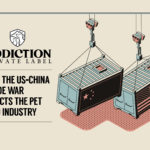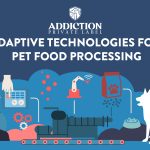Millennials are undoubtedly moving the pet food industry at phenomenal rates. Manufacturers have taken notice of the impact that millennial spending has on pet-related brands and of their potential to reshape the industry altogether in the next few years.
These consumers account for a third of all pet owners in the US, under the 18 to 34-year-old age group. This translates into millennial households spending an average of more than $180 for holiday pet gifts alone, compared to slightly more than $60 for overall consumer holiday gift spending.
As a group, millennials account for $67 billion of the pet industry annually, on average spending between $900 to $1200 on pet food and pet-related products. In the US alone, they are considered as the largest group of consumers and lead pet ownership across age groups there. Millennials are buying more expensive pet food and their spending patterns are seen to affect big brands in mass markets.
Currently, marketers heavily rely on multi-channel, holistic communication strategies to reach out to millennials – given their reliance on product familiarity and the influence of their peers and contemporaries. Likewise, testimonials and the use of emotions also help brands to convince millennial consumers to buy certain brands.
Representing a third of the entire pet food consumer market, millennials have opened a whole new opportunity for manufacturers and retailers to tap into, while raising new questions on traction alongside such opportunities and on how these new consumers can be enticed to support brands already out in the market.
New trends, new opportunities
Several key trends are impacting the pet food industry across market nowadays, most prominent of which is the humanization and premiumization of pet food.
Humanization in the pet food industry among mature markets is driven mostly by the changing lifestyles and demographics of new owners. As more retailers note the rise in customers who treat their pets as family members, key markets like China are seeing a considerable increase in spending for pets among new owners or about ¥5,000 per pet in a year for pet-related products, including pet food.
Likewise, issues on transparency, clean labels and emerging categories are also changing the pet food landscape, alongside the growing patronage to e-commerce platforms for pet-related spending.
Entering new markets
Beyond marketing concerns however, manufacturers need to look into how markets are constantly reshaped by policies and regulations set by both federal and self-governing bodies across mature and burgeoning markets.
For example, policy changes in new markets like China lead manufacturers to new challenges in both entering the market and reaching the consumers. Moreover, recent policy changes, for example, make breaking into the Chinese market nearly impossible for certain brands, particularly those from the US – unless a strategic partnership is formed. With other considerations like country of origin for ingredients and proteins, manufacturers that can produce and export product to new markets are even more limited.
Aside from these concerns, the growing distrust on manufacturers from target retailers, and consumers like millennials, has encouraged manufacturers to become more open about how they source their ingredients and what processes are used to produce their pet food.
Yet in the end, a strong private label partnership makes the difference in ensuring that your brands are customized for their target markets. This partner should also be knowledgeable in existing market trends and is able to follow through this commitment by staying relevant to market demands. Trust Addiction Foods Private Label to be that partner for you.
Discover how Addiction Foods can help you reach the right markets. Ask us here.
Exploring customized formulations? Here are some options.










